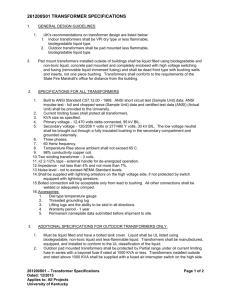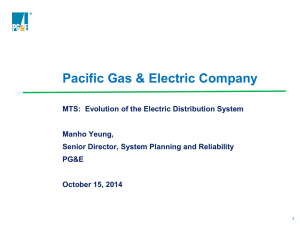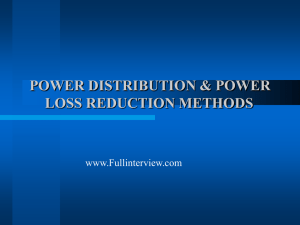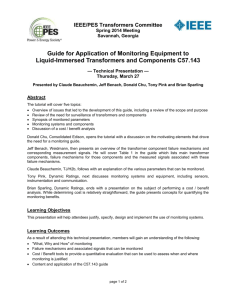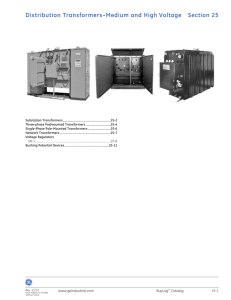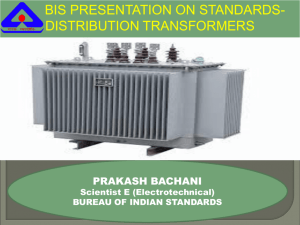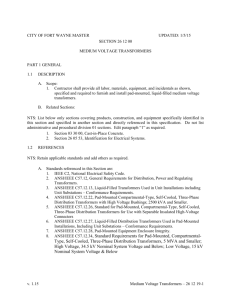transmission phase
advertisement
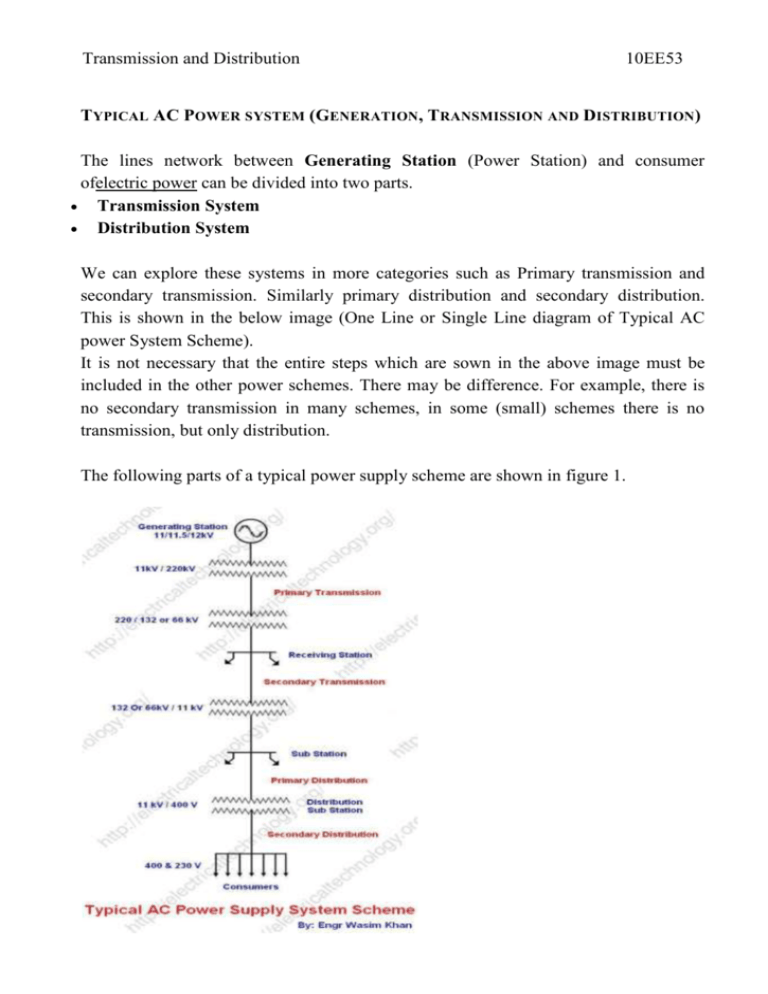
Transmission and Distribution 10EE53 TYPICAL AC POWER SYSTEM (GENERATION, TRANSMISSION AND DISTRIBUTION) The lines network between Generating Station (Power Station) and consumer ofelectric power can be divided into two parts. Transmission System Distribution System We can explore these systems in more categories such as Primary transmission and secondary transmission. Similarly primary distribution and secondary distribution. This is shown in the below image (One Line or Single Line diagram of Typical AC power System Scheme). It is not necessary that the entire steps which are sown in the above image must be included in the other power schemes. There may be difference. For example, there is no secondary transmission in many schemes, in some (small) schemes there is no transmission, but only distribution. The following parts of a typical power supply scheme are shown in figure 1. Transmission and Distribution 1. 2. 3. 4. 5. 10EE53 Generating Station Primary transmission Secondary transmission Primary Distribution Secondary Distribution Following is detail of the above sections GENERATING S TATION: The place where electric power produced by the parallel connected three phase alternators/generators is called Generating Station (i.e. power plant). The Ordinary power plant capacity and generating voltage may be 11kV, 11.5 kV 12kV or 13kV. But economically, it is good to step up the produced voltage from (11kV, 11.5kV Or 12 kV) to 132kV, 220kV or 500kV or greater (in some countries, up to 1500kV) by Step up transformer (power Transformer). PRIMARY TRANSMISSION : The electric supply (in 132kV, 220 kV, 500kV or greater) is transmuted to load center by three phase three wire (3 Phase – 3 Wires) overhead transmission system. also read: Power Factor Transmission and Distribution 10EE53 SECONDARY TRANSMISSION : Area far from city (outskirts) which have connected with receiving station by line is called Secondary transmission. At receiving station, the level of voltage reduced by step-down transformers up to 132kV, 66 or 33 kV, and Electric power is transmit by three phase three wire (3 Phase – 3 Wires) overhead system to different sub stations. So this is a Secondary Transmission. PRIMARY DISTRIBUTION : At a sub station, the level of secondary transmission voltage (132kV, 66 or 33 kV) reduced to 11kV by step down transforms. Generally, electric supply is given to those heavy consumer which demands is 11 kV, from these lines which caries 11 kV ( in three phase three wire overhead system) and they make a separate sub station to control and utilize this power. In other cases, for heavier consumer (at large scale) their demand is about 132 kV or 33 kV. they take electric supply from secondary transmission or primary distribution ( in 132 kV, 66kV or 33kV) and then step down the level of voltage by step-down transformers in their own sub station for utilization ( i.e. for electric traction etc). SECONDARY DISTRIBUTION : Transmission and Distribution 10EE53 Electric power is given by (from Primary distribution line i.e.11kV) to distribution sub station. This sub station is located near by consumers areas where the level of voltage reduced by step down transformers 440V by Step down transformers. These transformers called Distribution transformers, three phase four wire system ((3 Phase – 4 Wires)). So there is 400 Volts (Three Phase Supply System) between any two phases and 230 Volts (Single Phase Supply) between a neutral and phase (live) wires. Residential load (i.e. Fans, Lights, and TV etc) may be connected between any one phase and neutral wires, while three phase load may be connected directly to the three phase lines.



